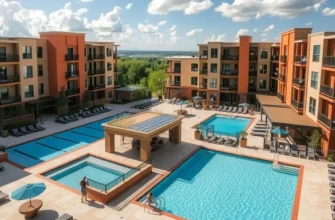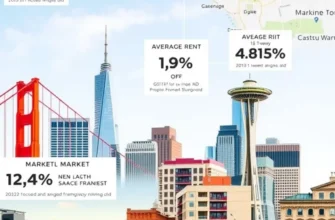Relocating to a new city can be both exciting and daunting, especially when it comes to finding the perfect rental. Milwaukee, known for its vibrant culture, friendly community, and affordable living options, is becoming a popular choice for young professionals, students, couples, families, and mobile professionals. This guide aims to help potential renters navigate Milwaukee’s local rental market, providing essential insights and practical tips. Whether you’re looking for a bustling downtown apartment, a cozy neighborhood home, or something in between, you’ll discover key information on neighborhoods, rental costs, and crucial considerations to make your transition smooth and enjoyable. From understanding the rental landscape to discovering community amenities and local hotspots, preparing to make a move to Milwaukee has never been more accessible. Let’s dive into Milwaukee’s rental scene and set you on the path to your new home!
Understanding Milwaukee’s Rental Landscape

Milwaukee’s rental market offers a lot of diversity, catering to various lifestyle and budget preferences. As of the latest reports, average rent here hovers around $1,200 for a one-bedroom apartment. However, rents can vary widely depending on the neighborhood and property type.
Popular neighborhoods like East Side, well-known for its historic charm, tend to have higher rent prices. Here, architectural gems are the norm, catering to those who appreciate historic details and a vibrant cultural scene. Riverwest, on the other hand, is celebrated for its strong community spirit. Renters often find a mix of affordable apartments, co-ops, and shared housing options, making it ideal for students and young professionals.
In the heart of the city, downtown Milwaukee offers a plethora of modern apartments. These high-rises feature amenities like fitness centers and rooftop lounges. Rental prices are higher in the city center due to the alluring proximity to work, dining, and entertainment options. Living downtown suits those who thrive amid urban energy and prefer walking or biking to their destinations.
For families seeking space and tranquility, Milwaukee’s suburbs are appealing. Areas such as Bay View and Wauwatosa are family-friendly and provide larger homes with yards for children to play. Rental costs here can be more affordable than city options, and they often come with the advantage of good schools and community parks.
Milwaukee’s rental properties range from studio apartments to larger family homes. Downtown and the East Side are popular for single professionals and students due to their vibrant atmosphere and accessibility. On the contrary, neighborhoods like Riverwest offer a blend of eclectic and bohemian vibes, drawing artists and creatives.
When selecting a rental, consider factors like proximity to work, public transportation access, and neighborhood vibe. If you own pets, ensure the property is pet-friendly and familiarize yourself with potential pet deposits. Understanding lease terms and any additional costs can prevent costly surprises.
Navigating Milwaukee’s rental landscape requires understanding each neighborhood’s unique offerings. Whether you’re seeking a trendy, bustling environment or a quiet family abode, Milwaukee accommodates various preferences. This diversity makes Milwaukee an attractive city for renters looking for a place that feels like home.
Finding Your Ideal Rental

To find the perfect rental in Milwaukee’s bustling market, leverage reliable platforms and local resources. Online rental listing websites remain an essential tool, offering filters for price, neighborhood, and amenities. However, don’t overlook local platforms and classifieds, as these can offer listings not found on national websites.
Ensure you understand what to expect during the application process. Usually, you’ll need to provide proof of income, a completed rental application, and references. Be prepared for application fees; these are common and average between $25 and $50. Some landlords may also conduct a background and credit check, so it’s wise to check your credit score in advance.
Securing a rental in Milwaukee involves navigating potential challenges, such as competitive markets or areas with limited availability. If you encounter difficulty, consider expanding your search radius to include up-and-coming neighborhoods where rental prices might be more favorable.
Next, determine what amenities and features are your top priorities. Milwaukee offers a variety of rental options, from historic pre-war buildings to modern high-rises. While some features like good natural light might be negotiable, consider prioritizing in-unit laundry, secure parking, and pet policies. For pet owners, specific flooring materials might be more suitable, as outlined in pet-friendly flooring solutions.
Lastly, consider partnering with local real estate agents who specialize in helping newcomers move to Milwaukee. These professionals can provide insights into neighborhoods, help negotiate lease terms, and sometimes have access to listings not widely advertised. Their expertise may prove invaluable, particularly if you’re unfamiliar with the area.
These strategies and resources aim to empower you as you navigate Milwaukee’s rental market, ensuring a smoother transition into your new home.
Final words
Milwaukee is a city filled with opportunities, and finding the right rental home is the first step to immersing yourself in its lively culture. From understanding the rental options available to strategically exploring listings, gaining insight into Milwaukee’s neighborhoods can simplify the process tremendously. Remember to take time to visit different areas, understand local amenities, and engage with potential neighbors to get a feel for where you would like to live. As you prepare for your move, keep this guide handy to ensure a seamless transition into your new chapter in Milwaukee. Welcome to your new home!









